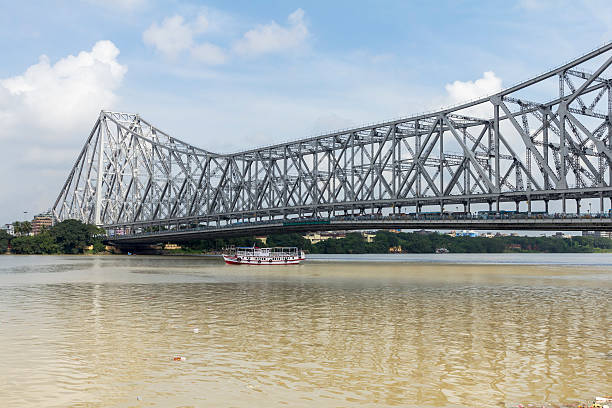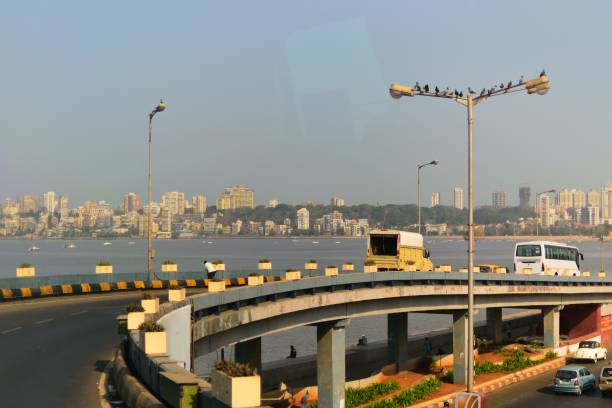Installation of steel support frames to the saddles that attach the chains on London’s Hammersmith bridge this month marks a major milestone in the work to stabilise the structure. The 135 year old bridge across the River Thames, between the London Boroughs of Hammersmith and Fulham and Richmond, has been closed to road traffic since April 2019 after cracks were discovered in the cast iron pedestals along with other major defects. The frames that will stabilise the Grade II* listed bridge, which falls under the ownership of the London Borough of Hammersmith and Fulham (LBHF), are formed from 1,220 pieces of steel that have been cut, welded and painted offsite. Once the steel frames are fitted, contractor FM Conway and its sub-contractors Freyssinet and Taziker Industrial will jack up the saddles and replace the corroded seized bearings with rubber ones reinforced with steel plates which allow pressure to be applied equally while protecting the vulnerable cast-iron structure of the bridge. Completion of that work, which was designed by Mott MacDonald, will allow carriageway and deck repairs to be undertaken to allow the main carriageway to be reopened for cyclists. However, it will be a number of years before the bridge can be reopened to motor traffic or fully restored. Nonetheless, with the stabilisation nearing completion focus is now turning to the next phase with the first of a series of public information events about the restoration set to start from tomorrow. LBHF has said that it plans to undertake a public consultation on the scheme to use a temporary double-decker truss structure to aid the repairs. The planning application for the truss is expected to be submitted towards the end of next month. The proposal to use the solution was first put forward by Foster + Partners and Cowi in late 2020 and in October last year LBHF confirmed that it was to push ahead with the solution. The double-decker temporary crossing running above the existing deck of Hammersmith Bridge would allow pedestrians and motorists to cross the Thames while the existing deck and suspension structures are removed, repaired offsite and then reinstated. Using the temporary truss allows for offsite refurbishment of the structure,” explained Cowi senior technical director David McKenzie. “It removes the risks of working over water for the refurbishment and allows us to keep closures of the bridge to pedestrians to hours at a time and not longer. The offsite approach means that if we find further defects, they will be much easier to deal with and will not slow or disrupt the programme.”

However, Gaining Planning Consent is not Straightforward.
A spokesperson for LBHF described the application as having some unusual factors. “For a start you have two planning authorities [LBHF on the north side of the Thames and London Borough of Richmond upon Thames on the south] so we have to essentially do the process twice and ensure both sides are satisfied, along with Historic England,” they said. “Both councils are supportive of the repair and restoration because we really do want to get it open for the communities.” According to Foster + Partners head of structural engineering Roger Ridshill Smith, the scheme and ideas that will be put through in the planning application remain the same as the proposal presented to the council in October. “What we have done [since October] is learned a lot more about the existing bridge and the state it is in,” he said. Foster + Partners partner Ken Hogg added: “Over the last six months we have been studying the history of the bridge and the potential for improvement. It is a listed structure, so contemporary changes will be minimal but we have been working with Historic England and established some minor upgrades to the bridge. We have also been reviewing the existing bridge and additional work that has been applied to the bridge during its lifetime – for safety and so on – and we’re working on an approach to take away some of those elements, upgrade them and make it more akin to the original design by Bazelgette.” The length of time for the plan to gain planning consent is hard to predict but, once secured, the work to install the temporary truss and carry out the repairs needs to be procured. The council anticipates that the procurement process will take 18 months. Ridshill Smith said: “Once the contract has been awarded, it should take between 18 and 24 months to get the truss installed and open to vehicles. The process overall, including the offsite refurbishment, will be around 36 months.” McKenzie described the process to launch the modular truss deck into position as something the industry “does all the time” although he acknowledged that the space to do the launch at Hammersmith is tight. “It is a question of assembling it and pushing it out,” he said. “Because the truss will be made in the factory and trial assembled before being brought to site, we know that everything fits and that is key to the certainty of this approach.

“It Then Gives us a Great Platform to Work on The Structure.”
With the truss in place a vehicle ramp would then be installed at either end to allow access to the upper deck of the temporary structure. At first pedestrians and cyclists would use the upper level and the lower level would be used as a construction site to remove the existing bridge structure for refurbishment. Once the truss is in place, McKenzie said that decoupling the deck and lowering it down is straightforward. “The chains are more of a challenge but we have a methodology for those,” he adds. “We have to temporarily support them off the truss, prop them up and then decouple them so that the tension is taken out and then take them away in sections.” Once Hammersmith Bridge’s deck has been successfully removed the lower level of the temporary crossing will then be used by pedestrians and cyclists, while the upper level would allow motorists to cross the Thames. Similarly to the role it will play in deconstructing the bridge, the truss will aid reconstruction following the refurbishment. LBHF’s spokesperson declined to comment on the final cost of the plans but told NCE that the project is affected by inflationary pressures. It has previously been estimated that the cost of full restoration could come in at between £141M and £163M. The cost of the work is expected to be split between central government, Transport for London and LBHF with each paying a third of the final bill. At the same time as the truss solution was adopted, the council has also confirmed its plan to meet its share of the construction costs, as well as the ongoing operation and maintenance of the bridge, through a toll or road user charge. The first public drop-in session to share more detail about the plan will be held tomorrow at St Paul’s Centre, Queen Caroline Street, W6 9PJ from 11am to 2pm. A second session will be held at the same venue from 4pm to 8pm on 27 March. Two further sessions are planned at St Paul’s School, Lonsdale Road, SW13 9JT and will take place from 4pm to 8pm on 28 March and 11am to 2pm on 1 April.


Recent Comments